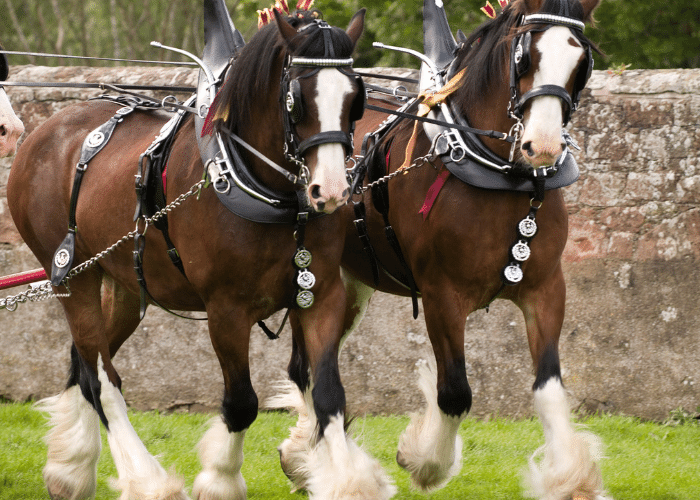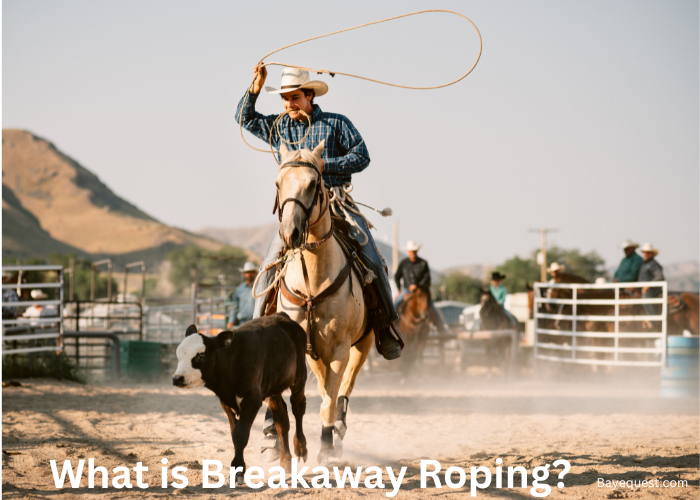When we think of Clydesdales, we picture giants. These horses are not just big; they’re iconic, thanks to their size, strength, and gentle nature.
But have you ever wondered, how much do Clydesdales weigh? Knowing their weight is not just about satisfying curiosity. It’s crucial for their care, health, and the jobs they do.
Whether pulling carts, appearing in parades, or simply being our gentle giants, their weight plays a big part. So, let’s dive in and discover the scales of these magnificent creatures.
How Much Does a Clydesdale Horse Weigh? Key Takeaway
Clydesdales weigh between 1,800 and 2,300 pounds. These majestic draft horses have an impressive size, strength, and gentle nature, making them popular in parades and heavy farm work. Their substantial weight is a key characteristic of the breed, contributing to their powerful presence.
About Clydesdale Horses
Clydesdales hail from Scotland and live in the lush valleys and rivers of Lanarkshire. Their story begins in the 18th century when local farmers bred them for power.
They needed strong horses for their fields, for pulling heavy loads. Fast forward, and these horses became stars, not just on farms but in parades and shows worldwide.
Now, let’s talk looks. Clydesdales have variety of colors. Bay is common, but you’ll see black, brown, and even roan.
Their mane and tail? Often white, flowing, and striking. But it’s not just the color that catches your eye. It’s those legs. They are among the horses with feathered feet, making them look like they’re wearing boots.
Speaking of hooves, they’re huge, fitting for such large creatures. And up top, their heads are broad with a straight profile, large eyes, and small ears, giving them a friendly face.
Their teeth? Just like other horses, they tell a tale of their age.
Hair is not just for looks. It keeps horses warm and adds to their charm, especially those distinctive leg feathers.
These horses live a good life, often reaching 20 to 25 years, a testament to their strength and the care they receive.
Lastly, body temperature. Clydesdales, like us, keep it around 37.5 to 38.5 degrees Celsius. It’s a sign of their health, something owners keep a close eye on.
How Much Do Clydesdales Weigh?
Clydesdales tip the scales in a way that might just surprise you. They weigh about 1,800 to 2,300 pounds. That’s like the weight of a small car.
Now, why do they weigh so much? Well, it’s all in their build. These horses are bred to be muscular, robust, and powerful, ideal for pulling heavy loads and showing off in parades.
It’s their heft and strength that have made them famous worldwide.
But it’s not just about being big. Their weight tells us about their health, how well they’re fed, and how much they’re exercised.
Keeping a Clydesdale at a healthy weight is a big deal. It means balancing their diet and making sure they get plenty of exercises, so they stay fit, not just big.
So, next time you see a Clydesdale, remember you’re looking at a marvel of nature. A creature that combines power, grace, and a surprising amount of weight.
How Much Does A Newborn Clydesdale Weigh?
When a Clydesdale foal comes into the world, it’s already tipping the scales in a way that might catch you off guard. A newborn, still wobbly on its legs, weighs as much as an adult human.
We’re talking 150 to 200 pounds. Yes, right from the start, these foals are setting themselves up to be the gentle giants we admire.
Growing fast, they gain strength and size, preparing to become the towering, powerful horses known and loved by many. It’s a remarkable start to a life that’s as grand as the Clydesdales themselves.
Why are Clydesdales so Heavy? (Significance of Weight in Clydesdales)
Clydesdales pack a lot of weight, and there’s good reason for it. Originally from Scotland, these horses were bred for power.
Back in the day, farmers and merchants needed strong horses to pull heavy loads like ploughs and carts. Clydesdales fit the bill perfectly. Their hefty weight, combined with their muscular build, makes them powerhouse movers.
But their weight isn’t just about muscle and brawn. It’s also about their role in society.
Clydesdales have become symbols of strength and endurance. They make appearances in parades and commercials, showcasing their majestic presence and ability to pull heavy carriages.
On the health side, their weight speaks volumes, too. A well-maintained weight is a sign of good health and proper care in Clydesdales. It means they’re getting the right diet, enough exercise, and proper veterinary care.
How Do Clydesdales Support Their Weight?
Clydesdales are big, really big. So, how do they carry all that weight? It’s all about smart design and good care.
Legs. Their legs are super strong, built to hold up a lot of weight. These legs have strong bones and muscles that work together to keep the Clydesdale steady and moving smoothly.
Hooves. Think of their hooves as big, wide shoes. They spread out the weight so no part of the foot gets too much pressure. This helps them stand and walk without trouble.
Diet and exercise. Eating right and staying active are key. A healthy diet gives them the energy and strength they need, and exercise keeps their muscles strong and their joints ready for action. It’s like how people feel better when they eat well and move around.
Care. Humans play a big part, too. Vets check on them to catch any health issues early. Farriers make sure their feet are in tip-top shape. And a clean, safe place to live keeps them happy and healthy.
All these things together help Clydesdales support their big bodies. It’s a mix of nature’s design and some help from their human friends.
Factors that Influence a Clydesdale’s Weight
When it comes to Clydesdale’s weight, a few key things play a big role.
First off, genetics. Just like in families where height and build can pass down through generations, Clydesdales inherit traits.
Then there’s their diet. It’s like fuel for these giants. The quality and quantity of their food—grains, hay, and the occasional treat—help keep their weight on track. Get it right, and you’ve got a healthy, strong Clydesdale. Miss the mark, and you might have some weight issues to manage.
Exercise is another biggie. Clydesdales need to move. Regular activity helps them stay fit, builds muscle, and keeps the pounds from piling on in the wrong way. Think of it as their gym routine, keeping them in top form for whatever task comes their way.
Lastly, their overall care plays a part. Regular check-ups with a vet, proper hoof care, and a clean, safe living environment help ensure a Clydesdale stays healthy. And a healthy Clydesdale is more likely to maintain a proper weight.
So, it’s not just one thing that decides a Clydesdale’s weight. It’s a mix of their genes, what they eat, how much they move, and the care they receive. All these factors together keep these magnificent horses looking and feeling just right.
Are Clydesdales the Heaviest Horses?
Clydesdales are among the heaviest horses, but they’re not at the top of the list. That title often goes to the Shire horse. Shires are another breed of draft horse, like Clydesdales, and they can be even heavier and taller.
While Clydesdales can weigh around 1,800 to 2,300 pounds, Shires can tip the scales even more, sometimes reaching up to 2,400 pounds or more. (Use this online calculator to convert pounds to kilograms if you want to.)
Both breeds are known for their strength and size, but when it comes to the heavyweight champion of the horse world, Shires usually take the lead.
So, Clydesdales are definitely heavyweights, but in the world of giant horses, the Shire horse often edges them out in the weight category.
FAQs
Can you ride a Clydesdale?
Yes, you can ride a Clydesdale. Despite their size and strength, Clydesdales have a gentle temperament, making them suitable for riding. However, their large stature means they’re not the typical choice for this purpose. They’re more commonly used for driving and draft work.
How much does a Clydesdale cost?
A Clydesdale horse costs $1,000 to $5,000, on average. However, the prices vary widely, depending on the bloodline, age, and training (type and level). For instance, you can find younger equines for less than $1,000. Meanwhile, award-winning veterans cost $20,000+.
Is Clydesdale the strongest horse in the world?
While Clydesdales are strong and capable of pulling heavy loads, they are not the strongest horse breed in the world. That distinction is often given to breeds like the Belgian Draft, known for their immense power and ability to pull extraordinary weights. However, Clydesdales are highly valued for their strength, endurance, and versatility.
How much does the biggest horse weigh?
The biggest horse on record, a Shire horse named “Sampson” (later renamed “Mammoth”), weighed an astonishing 3,360 pounds (1,524 kg). Sampson stood 21.2 hands (7 feet, 2 inches) tall at the withers, making him both the heaviest and tallest horse ever recorded.
How Much Does a Clydesdale Weigh? Conclusion
And there you have it—the majestic Clydesdale, a true giant among horses, not just in size but in heart and spirit. From their impressive weight range of 1,800 to 2,300 pounds to their gentle nature.
Clydesdales are more than just horses. They’re symbols of strength, endurance, and grace. Whether pulling a plow, marching in a parade, or simply grazing in a field, these gentle giants proudly carry their weight.
So, next time you see a Clydesdale, remember the incredible blend of power, care, and history that defines them. They’re not just heavy; they’re extraordinary.








